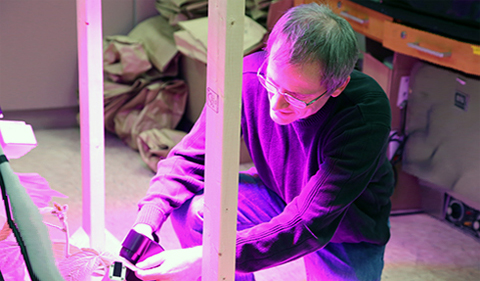The Environmental & Plant Biology Colloquium Series presents Dr. David Rosenthal discussing “From beans to nuts: Improving food security and informing ecological restoration in a changing world”on Oct. 26 from 11:50 a.m. to 12:45 p.m. in Porter Hall 104.
Rosenthal is Assistant Professor of Environmental & Plant Biology at Ohio University.
Abstract: Rising atmospheric [CO2], combined with emissions of other greenhouse gases, are the principal causes of climate change. Increasing [CO2] stimulates photosynthesis in most C3 plants; however, when coupled with increasing temperature and possible droughts, many models indicate crop yields and ecosystem productivity will decline. Therefore, a fundamental question for agriculture is how to adapt crops to sustainably increase yields in the face of climate change. This seminar will describe how I am addressing this question in Glycine max (L.) Merr. (soybean), the world’s fourth most important commodity crop, by assessing natural variation in functional traits linked to increased photosynthetic and water use efficiencies. Lessons learned from agricultural crops can also be applied to naturally occurring plant communities. Understanding how plants respond to predicted increases in temperature or drought stress is essential for ecological restoration. I will address this challenge with results from studies of Castanea dentata (Marshall) Borkh. (American chestnut). American chestnut was rendered functionally extinct in North American forests by the chestnut blight. Potentially blight resistant hybrids of American chestnut are now available and provide an ideal framework to study the effects of climate change on chestnut physiology and hybrid restoration. American chestnut sapling physiology varies across the hybrid varieties, with responses to simulated increases in [CO2] and temperature that inform their restoration potential.




















Comments